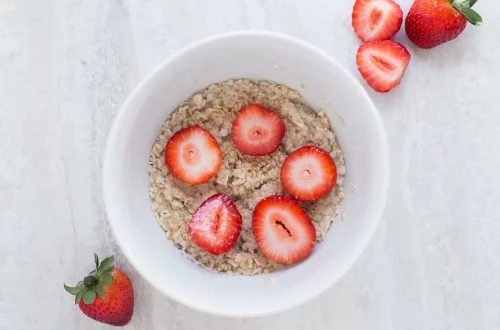
Freckles vs Sunspots: Understanding the Differences and Skin Care Tips
Freckles and sunspots are two common skin conditions that often lead to confusion among individuals trying to understand their skin better. While both appear as pigmented spots on the skin, they differ significantly in their origin, appearance, and implications for skin health. Freckles, which are often associated with genetics, are small, light brown spots that typically appear on sun-exposed areas of the skin, particularly among those with fair complexions. On the other hand, sunspots, also known as solar lentigines, are larger, darker spots that develop as a result of prolonged sun exposure, often appearing in older adults.
The interplay between these two types of pigmentation is a reflection of the skin’s response to UV radiation. Understanding these differences is crucial for effective skin care and prevention strategies. Many individuals seek ways to either embrace or minimize these spots, which can significantly influence self-esteem and confidence. Moreover, recognizing the nature of freckles versus sunspots can lead to better choices in sun protection and skin care routines, ultimately promoting healthier skin.
As we delve deeper into the distinct characteristics of freckles and sunspots, we will explore their formation, the underlying causes, and effective skin care tips designed to manage and protect your skin from these common conditions.
Understanding Freckles: Causes and Characteristics
Freckles are small, flat, and usually light brown or tan spots that appear primarily on areas of the skin that receive the most sun exposure, such as the face, shoulders, and arms. They are particularly common among individuals with fair skin and red or blonde hair, a trait that is largely hereditary. The primary cause of freckles is an increase in melanin production, which is the pigment responsible for the color of our skin, hair, and eyes.
Genetics plays a significant role in the formation of freckles. If one or both parents have freckles, there is a higher likelihood that their children will also develop them. This genetic predisposition is often more noticeable in the spring and summer months when sun exposure increases, leading to more pronounced pigmentation. Freckles tend to fade during the winter months when there is less sun exposure, showcasing their temporary nature.
In terms of appearance, freckles are typically small, ranging from 1 to 2 millimeters in diameter, and are often uniform in color. They are generally harmless and do not require medical attention unless there is a significant change in their appearance, such as size, shape, or color. While many people embrace their freckles as a unique feature, others may seek ways to reduce their visibility.
To care for freckled skin, it is essential to adopt a proactive approach to sun protection. Using a broad-spectrum sunscreen with an SPF of at least 30 is crucial for preventing new freckles from forming and for protecting existing ones from darkening. Regular application, even on cloudy days, is vital for effective sun protection. Additionally, wearing protective clothing and seeking shade during peak sun hours can further help in managing freckles.
Sunspots: Understanding Solar Lentigines
Sunspots, or solar lentigines, are larger, flat, brownish spots that typically develop on sun-exposed areas of the skin, particularly as individuals age. Unlike freckles, which are more common in younger individuals, sunspots are often associated with prolonged sun exposure over the years. They are a sign of accumulated UV damage, making them more prevalent in older adults.
The formation of sunspots is primarily linked to the skin’s response to UV radiation. When the skin is exposed to sunlight, it tries to protect itself by increasing melanin production, which can lead to the development of these larger, darker patches. Sunspots are usually more pronounced than freckles, often measuring several millimeters in diameter and can appear in various shades of brown.
While sunspots are generally harmless, they can sometimes be mistaken for more serious skin conditions, such as melanoma. Therefore, it is essential to monitor any changes in the size, shape, or color of these spots and consult a dermatologist if you notice anything unusual. Regular skin checks are vital for early detection of potential skin issues.
To manage and prevent the appearance of sunspots, sun protection is key. Just as with freckles, using sunscreen is crucial. Choose a broad-spectrum sunscreen with a minimum SPF of 30, and apply it generously to all exposed skin. Regular reapplication, especially after swimming or sweating, is essential for maintaining protection. Additionally, incorporating antioxidants such as vitamin C into your skin care routine can help combat UV damage and improve the overall appearance of the skin.
Effective Skin Care Tips for Freckles and Sunspots
When it comes to caring for skin with freckles and sunspots, a tailored skin care routine can make a significant difference. Here are some effective tips to manage and treat both conditions while promoting overall skin health.
1. **Daily Sunscreen Use**: The foundation of any skin care routine for freckled or sunspot-prone skin is a high-quality sunscreen. Look for broad-spectrum formulations that protect against both UVA and UVB rays. Apply sunscreen every morning, and reapply every two hours when spending time outdoors.
2. **Gentle Cleansing**: Use a gentle, hydrating cleanser to avoid stripping the skin of its natural oils. Harsh cleansers can irritate the skin and exacerbate pigmentation issues. Choose products that are fragrance-free and suitable for your skin type.
3. **Exfoliation**: Regular exfoliation can help improve skin texture and promote cell turnover. Incorporate gentle exfoliants such as alpha hydroxy acids (AHAs) or beta hydroxy acids (BHAs) into your routine. However, avoid over-exfoliating, as this can lead to irritation and increased pigmentation.
4. **Targeted Treatments**: For those looking to reduce the appearance of freckles and sunspots, consider using targeted treatments containing ingredients such as hydroquinone, kojic acid, or retinoids. These ingredients can help lighten hyperpigmented areas and promote a more even skin tone. Always consult a dermatologist before starting new treatments.
5. **Moisturization**: Keeping the skin well-hydrated is crucial for maintaining its barrier function and overall health. Use a moisturizer that suits your skin type, and consider products with ingredients like hyaluronic acid or glycerin for added hydration.
6. **Regular Dermatologist Visits**: Periodic check-ups with a dermatologist are essential for monitoring skin changes and addressing any concerns. A professional can recommend treatments tailored to your specific skin type and condition.
In conclusion, understanding the differences between freckles and sunspots is vital for effective skin care. Both conditions, while generally harmless, require proper sun protection and care to manage. By adopting a diligent skin care routine and consulting with professionals when necessary, individuals can maintain healthy, beautiful skin.
*Disclaimer: This article is for informational purposes only and is not intended as medical advice. For any health concerns or skin conditions, please consult a qualified healthcare provider.*




